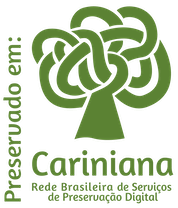Coloração de gema de ovo de poedeiras comerciais recebendo pigmentante comercial na ração
DOI:
https://doi.org/10.1590/1089-6891v20e-50231Resumo
Objetivou-se avaliar a pigmentação de gemas de ovos de poedeiras alimentadas com produto comercial (PC), à base de cantaxantina e óleo de sementes de urucum. Utilizaram-se 240 poedeiras comerciais com 55 semanas de idade, que receberam cinco diferentes rações: controle (RC) à base de milho e farelo de soja, RC com dois níveis (70 e 140 ppm) do PC e RC com dois níveis de mistura entre pigmentantes comerciais sintéticos Carophyll® Yellow e Red (20 + 10 ppm) e (15 + 30 ppm) e quatro repetições de 12 aves cada. Foram avaliados o desempenho e a cor das gemas, que foi avaliada utilizando o leque colorimétrico. Não houve efeito sobre o desempenho das poedeiras, exceto para a cor da gema, que apresentou interação dos pigmentantes nos diferentes períodos de avaliação. Aos sete dias de fornecimento, houve estabilização da pigmentação, com uso de 70 ppm do produto comercial, enquanto as gemas oriundas dos ovos das aves que receberam a inclusão de 140 ppm estabilizaram a cor aos 14 dias do fornecimento. O produto comercial à base de cantaxantina e óleo de sementes de urucum é eficiente na pigmentação da gema de ovos em rações à base de milho amarelo.
Palavras-chave: aditivos; avicultura; carotenoides; pigmentante natural; produção de ovos.
Downloads
Publicado
Como Citar
Edição
Seção
Licença
Copyright (c) 2019 Ciência Animal Brasileira

Este trabalho está licenciado sob uma licença Creative Commons Attribution 4.0 International License.
Autores que publicam nesta revista concordam com os seguintes termos:
- Autores mantém os direitos autorais e concedem à revista o direito de primeira publicação, com o trabalho simultaneamente licenciado sob a Licença Creative Commons Attribution que permite o compartilhamento do trabalho com reconhecimento da autoria e publicação inicial nesta revista.
- Autores têm autorização para assumir contratos adicionais separadamente, para distribuição não-exclusiva da versão do trabalho publicada nesta revista (ex.: publicar em repositório institucional ou como capítulo de livro), com reconhecimento de autoria e publicação inicial nesta revista.
- Autores têm permissão e são estimulados a publicar e distribuir seu trabalho online (ex.: em repositórios institucionais ou na sua página pessoal) a qualquer ponto antes ou durante o processo editorial, já que isso pode gerar alterações produtivas, bem como aumentar o impacto e a citação do trabalho publicado (Veja O Efeito do Acesso Livre).






























